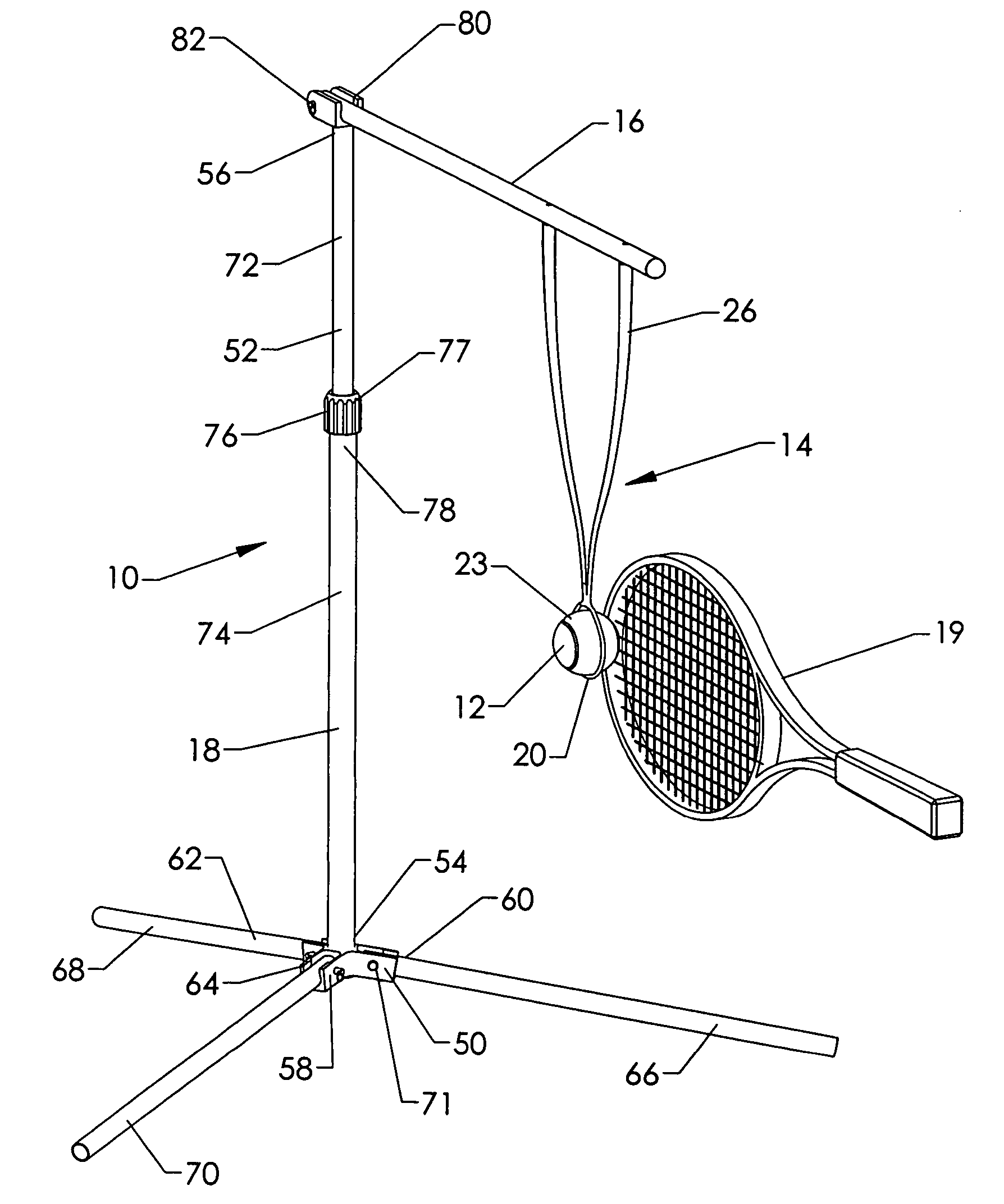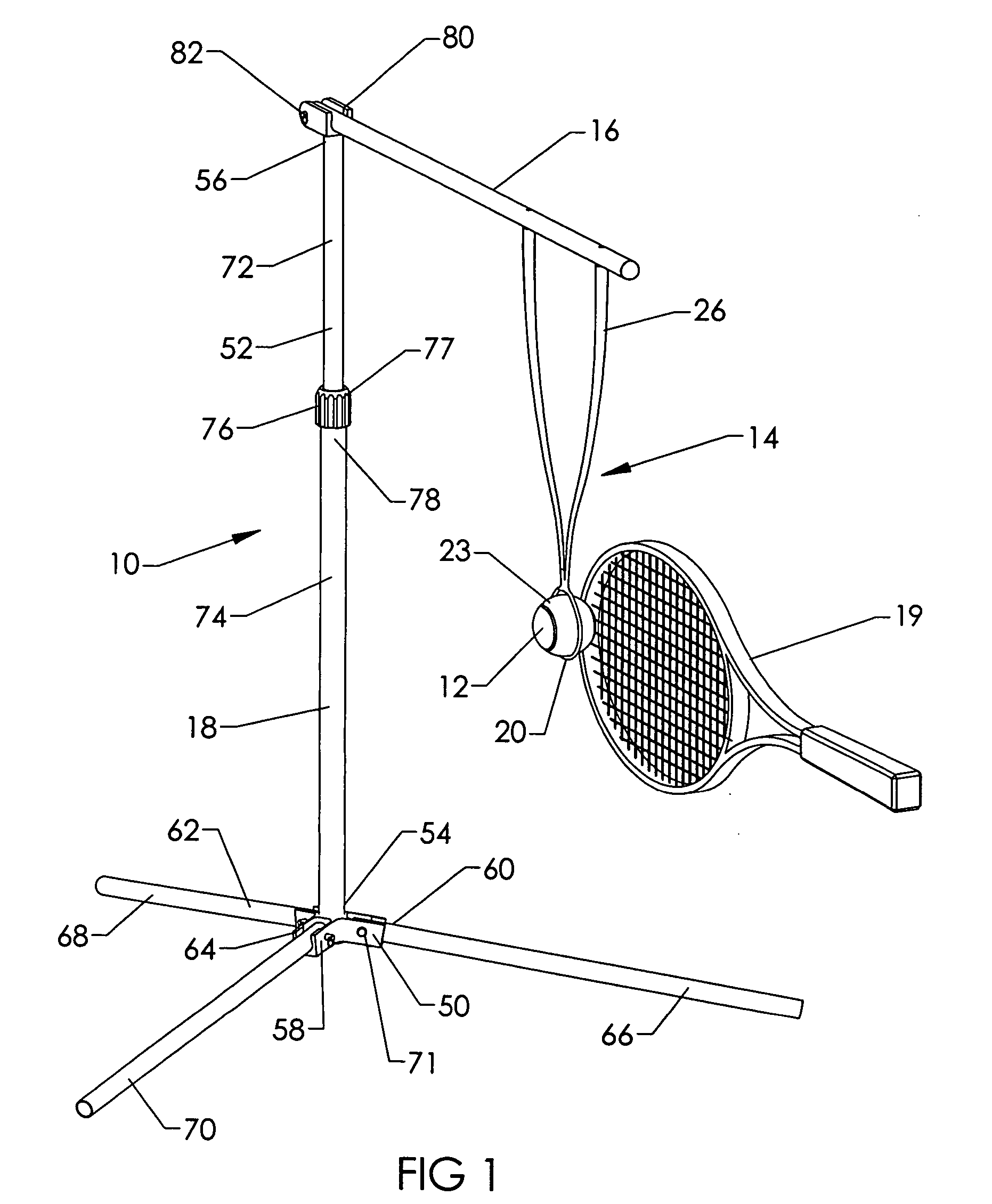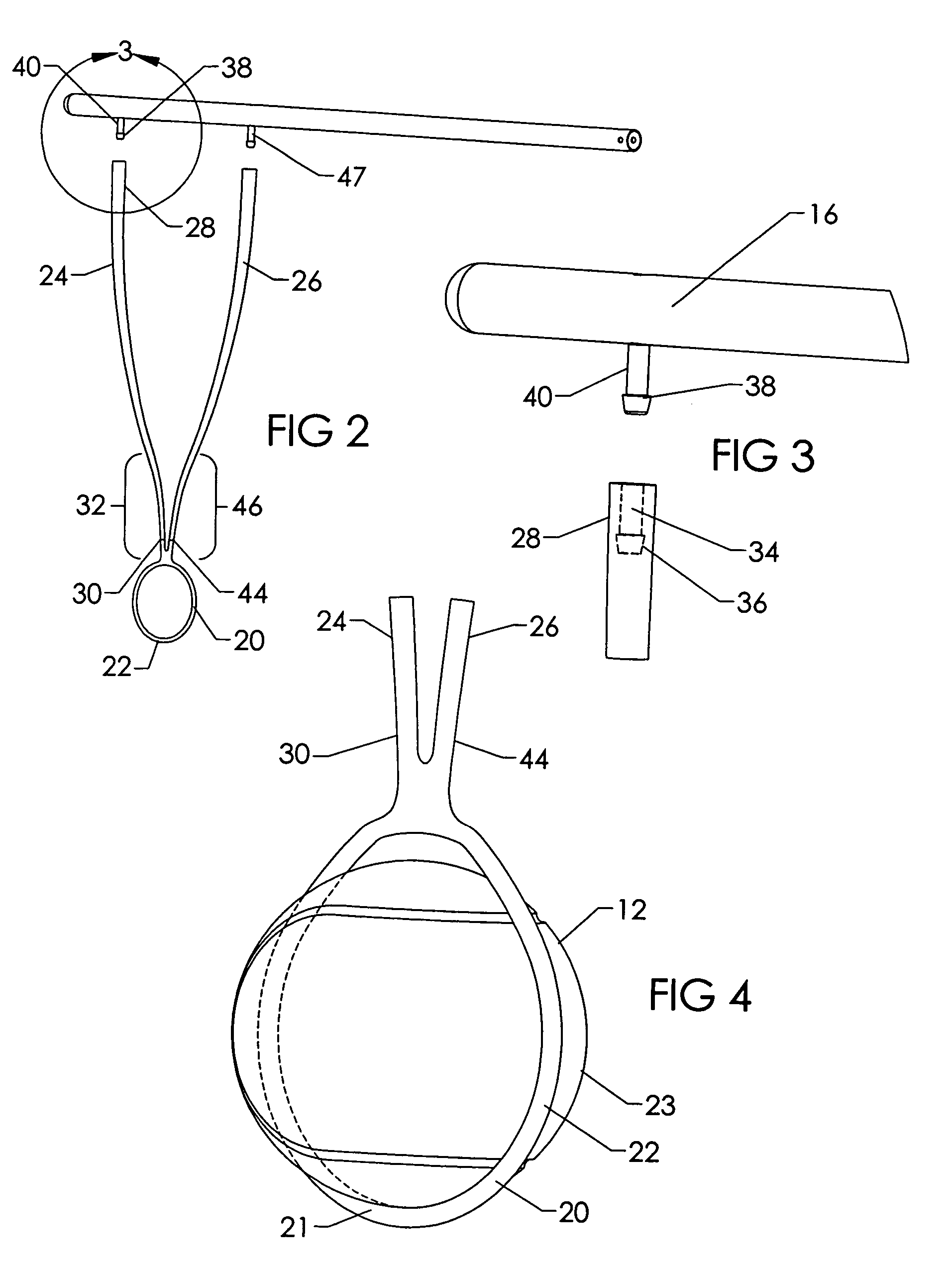Methods and devices for sport ball training
a technology of sport ball and training method, applied in the direction of sports apparatus, etc., can solve the problems of difficult use or transportation of devices, difficult to master, and difficult for players to analyze and correct problems
- Summary
- Abstract
- Description
- Claims
- Application Information
AI Technical Summary
Benefits of technology
Problems solved by technology
Method used
Image
Examples
embodiment 110
[0051]The strain relief protects the tubular elastomeric material of the sling members 112 and 114 and prevents the metal wire from puncturing through the sling member tube when the ball sling 110 is tightly flexed. This embodiment 110 also has a sleeve 126, which is disposed tightly over the sling members 112 and 114 adjacent the retainer member 128. Sleeve 126 can be bonded in place or left unattached so the user can adjust the circumference of the loop 130 of the retainer member 128. The sleeve's 126 position is adjusted by stretching the ball sling 110, which reduces the diameter of the components and allows the sleeve 126 to be repositioned. In other embodiments, the ball sling 110 may be made from an elongate elastomeric member having a reinforcement layer, such as a braid, disposed over the elastomeric tubing. The upper ends of the sling members 112 and 114 may be secured to the support 16 by a barb 132 in a fashion similar to that discussed above and shown in FIG. 9.
embodiment 140
[0052]FIGS. 12 & 13 show another ball sling embodiment 140 that has sling members 142 and 144 constructed from metal spring wire. The lower portion or loop 146 of the sling members 142 and 144 are insert molded into an elastomeric loop 148 as shown by the dashed portion of the member in FIGS. 12 and 13. The spring metal sling members 142 and 144 of this embodiment are not coated or surrounded by any polymer or elastomeric material which provides a simple design that is suited mainly for low velocity impacts as it has no shock absorbing features other than the loop portion 148. The metal spring sling members 142 and 144 may be made of any suitable metal, including spring steel and superelastic alloys, such as nickel titanium alloys.
embodiment 150
[0053]FIGS. 14 and 15 show another ball sling embodiment 150. The spring metal sling members 152 and 154 of this embodiment are not coated or surrounded by any polymer or elastomeric material but shock absorbing sections 156 and 158 are incorporated in the sling members 152 and 154 in the form of a helical wind which reacts like an extension spring when exposed to tensile load. Striking balls at a high velocity may put high levels of stress on the ball sling 150. These embodiments, as well as others, may employ shock absorbing features to overcome this problem. This embodiment also has a rigid retainer member 160 with a loop 162 made from high impact plastic e.g. polycarbonate nylon molded over the spring metal sling members 152 and 154. Two or more inward radial protrusions 164 are attached to the rigid retainer member and are sized to make contact with and restrain a sport ball.
[0054]FIGS. 16–19 illustrate the support device 18 of the sport ball training device 10 in an exploded v...
PUM
 Login to View More
Login to View More Abstract
Description
Claims
Application Information
 Login to View More
Login to View More - R&D
- Intellectual Property
- Life Sciences
- Materials
- Tech Scout
- Unparalleled Data Quality
- Higher Quality Content
- 60% Fewer Hallucinations
Browse by: Latest US Patents, China's latest patents, Technical Efficacy Thesaurus, Application Domain, Technology Topic, Popular Technical Reports.
© 2025 PatSnap. All rights reserved.Legal|Privacy policy|Modern Slavery Act Transparency Statement|Sitemap|About US| Contact US: help@patsnap.com



